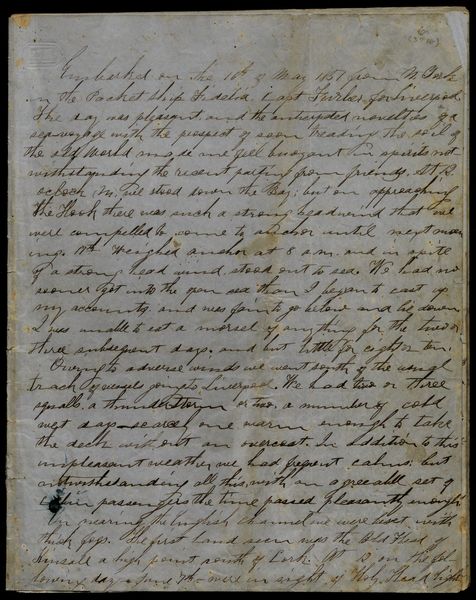Moore, John (1826-1907) Diary of John Moore
High-resolution images are available to schools and libraries via subscription to American History, 1493-1943. Check to see if your school or library already has a subscription. Or click here for more information. You may also order a pdf of the image from us here.
A high-resolution version of this object is available for registered users. LOG IN
Gilder Lehrman Collection #: GLC04192.06 Author/Creator: Moore, John (1826-1907) Place Written: s.l. Type: Diary Date: 16 May 1851 - 27 July 1851 Pagination: 36 p. ; 25 x 19.5 cm. Order a Copy
Excerpt:
Diary entries
12 June 1852: "The Tower has been so often described that it is unnecessary to enter into any description of it. There is no place in the world, perhaps where one can see so many specimens of all the varieties of arms that have been used from the earliest ages, together with coats of mail and every description of defensive armor. The cell in which Sir Walter Raleigh was so long confined is shown and a gloomy looking dungeon it is. The block on which he was beheaded is still preserved. The crown jewels and regalia are also kept in an apartment of the Tower."
13 June 1852: "Soldiers are on sentry at all hours at the different entrances to the Palace yard. This however is a matter of form more than from any apprehended danger, for no sovereign was ever so universally popular as the Queen. She rides out daily when the weather is fine without guards of any kind in an open carriage. Prince Albert and herself are almost daily at the exhibition from 9 ½ am to 11 or 12.
The queen is small in size and only passably good looking. But Prince Albert is one of the finest looking men in England. He never troubles himself about politics but attends to his own business, is a liberal patron of the useful arts, and is highly popular among the people. He is the projector of the Great Industrial Exhibition."
17 June 1852: "Spent the day visiting St. Thomas and Guys Hospitals. Two noble institutions each containing between four and six hundred beds, extensive libraries and valuable museums. Saw at Guys two important and interesting operations by the celebrated [Branksby ?] Cooper and Mr. [Shilton ?] - surgeons are not styled doctors in England - and an interesting lecture by that well and favorable known author Dr. Golding Bird. Great facilities are afforded here to students but it costs about five times as much as in the states."
18 June 1852: "A gentleman who came over with me from N. York was more fortunate. He saw her [Queen Victoria] yesterday as she came out. He solemnly affirms that she actually stepped into the carriage as any other lady might be expected to do, and more over, she made such a high step that caught a distinct glimpse of her leg, and which he vows was a very good one. So that the long mooted question, as to whether or not, a queen has legs, may now be considered as settled."
John Moore (1826-1907) was born in Indiana and taught school in Louisiana and Alabama. After medical school in Louisiana, he became an army surgeon and later served as U.S. Surgeon General.
Citation Guidelines for Online Resources
The copyright law of the United States (title 17, United States Code) governs the making of photocopies or other reproductions of copyrighted material. Under certain conditions specified in the law, libraries and archives are authorized to furnish a photocopy or other reproduction. One of these specific conditions is that the photocopy or reproduction is not to be “used for any purpose other than private study, scholarship, or research.” If a user makes a request for, or later uses, a photocopy or reproduction for purposes in excess of “fair use,” that user may be liable for copyright infringement. This institution reserves the right to refuse to accept a copying order if, in its judgment, fulfillment of the order would involve violation of copyright law.
